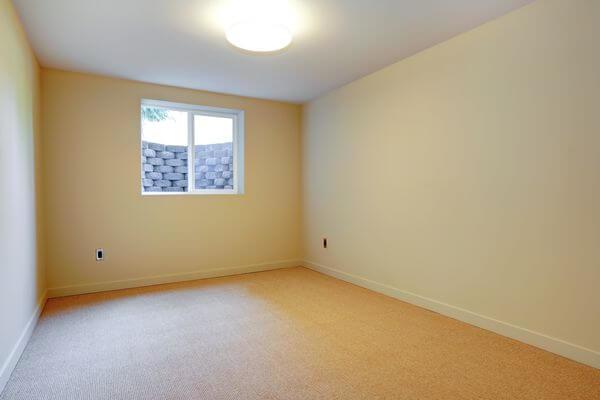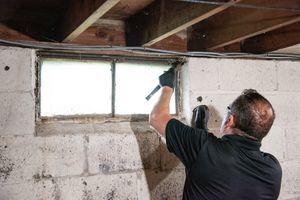Basement Windows 101: What To Know About Installing Egress Windows

Egress Windows are required by building codes around the world for any finished basement being utilized as a dwelling or living space.
According to the International Residential Code (IRC), any dwelling spaces or sleeping rooms below the fourth story of a home must have at least one emergency escape and rescue opening, as required by law. In essence, an egress window is required by all local zoning laws for a finished basement that is intended to be used as a sleeping area. It’s not only egress windows, though. An egress window well is also necessary to meet the standard of the law in a finished basement.
So, you may be wondering, what is the International Residential Code, what are it’s specifications--are basement windows required by code, and what are egress windows and window wells and how do they differ from regular basement windows?
The International Residential Code, Egress Windows And Window Wells
The IRC was first published and instituted in 1997, and ever since, as dictated by the code itself, “egress windows or doors are required in every habitable space. Especially in any room for sleeping purposes, it will require its own egress window.” This is especially true for finished basement spaces. The code has very specific requirements for basement egress windows as opposed to the other basement windows, in an effort to make these emergency exits as efficient and easy to use as possible.
The code’s specifications for basement egress windows are as follows:
-
The bottom of the egress window opening can't exceed 44" (slightly taller than your typical washing machine) from the finished floor.
-
The minimum opening area of the egress window is 5.7 square feet.
-
The minimum egress window opening height is 24" high.
-
The minimum egress window opening is 20" wide. (About as tall as your standard carry-on suitcase in a luggage set.)
-
The egress window must have a glass area of not less than 8% of the total floor area of room(s) for which it is servicing, to allow the minimum amount of sufficient natural light. *
-
The egress window must have an opening area of not less than 4% of the total floor area of room(s) for which it is servicing, to allow the minimum amount of natural ventilation. *
-
* Multiple windows can be used to service a single area where one window does not meet these percentages of total floor area. As long as the totaled amounts from this combination of windows meet or exceed the 8% for natural light and 4% for natural ventilation.
With so many requirements and down to the last inch measurements, it can feel slightly overwhelming to plan out an egress window in your finished basement. On top of the specifications of the code, there’s the accompanying window wells that will be needed to facilitate easy escape in the event of an emergency. A classic basement window is much smaller. Usually they are placed high on the wall, can open to one side to allow minimal air movement, and often become overgrown with weeds and grass over time. They aren’t designed for facilitating escape, but for a small amount of light and air to enter the basement.

Window wells are designed to allow easy escape in the event of an emergency.
The IRC has fewer specifications for window wells. A window well is a “well” or hole dug out around the basement window, structured to allow easy escape from the basement in case of emergency; and their specifications are as follows:
-
Egress window wells are required where the bottom of the egress window is below ground level.
-
The window well must not interfere with the egress window fully opening.
-
The distance from the egress window to the back of the Egress well must be at least 36"
-
The minimum area of the egress well must be 9 square feet. (width x projection)
Egress Window And Window Well Options
When designing a new finished basement, you may not always think of safety features as being attractive or lending to the overall feel of the space. Egress windows, however, welcome ample amounts of natural light, as opposed to classic basement windows, and are rather nice to look at, not at all detracting from the overall appearance of the newly finished space.
There are three popular choices for basement egress windows:
-
Double Hung Windows: The most common style of window, found in both older homes and newer construction. The two panels of the window overlap horizontally in the middle, with the bottom half of the window opening upwards.
-
Sliding Windows: In this style of window, the two panels open from side to side rather than up and down--functioning much like a sliding-glass door and also using a track to move.
-
Casement Windows: Unlike the other two styles of window, casement windows open in or out on a hinge, like a typical door. These windows can be opened via a handle or a hand crank and are often viewed as the best option for an egress window because of their ease of opening and exiting.
In comparison to the small, rectangular basement windows that may have been in the space beforehand, the new egress basement windows will be much larger and improve the airy and open feel of the new space. When designing a new finished basement, the use of an illusion of space is very important. Natural light plays a large part in this, allowing a room to feel more spacious.
As for window wells, there are several options available on the market, with materials ranging from stone and masonry, to metal and sturdy plastics. Designed with some sort of ladder or set of steps built into the window well itself to aid in quick and easy escape. Depending on the material you choose, whether it be plastic, metal or masonry, you have a fair amount of options on the market that can look quite nice.
Who To Call To Install Your Egress Window

The Total Basement Finishing Network provides basement window, egress window and egress window well services around the country!
If you’ve considered turning your basement into a recreational or secondary living space, egress windows are an essential step in the process, required by law and beneficial for the space overall. Finishing a basement space is a big deal, a lot of work, and can be a stressful project to tackle without the right resources, but hiring a professional can help flesh out all the details and guide you throughout the process.
If you’re looking for some assistance in your egress window and window well installation, Total Basement Finishing is here to help. Reach out for your free, no obligation estimate today!

